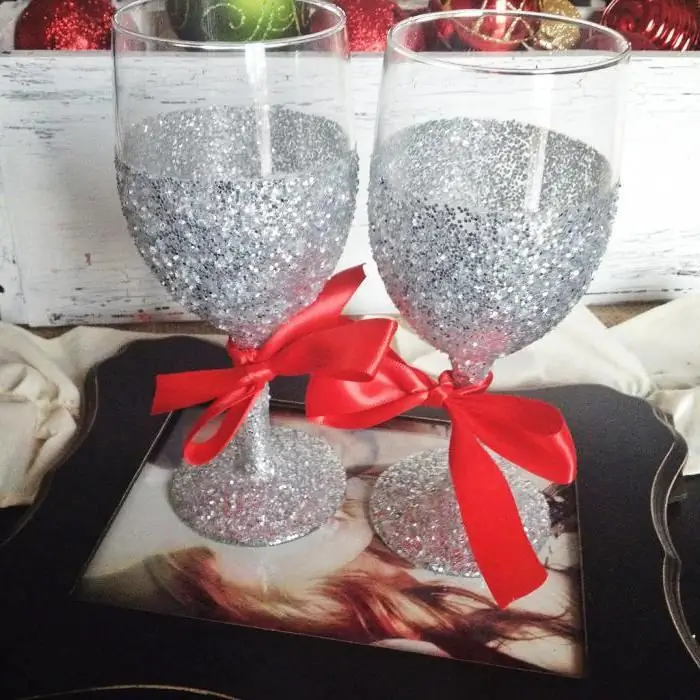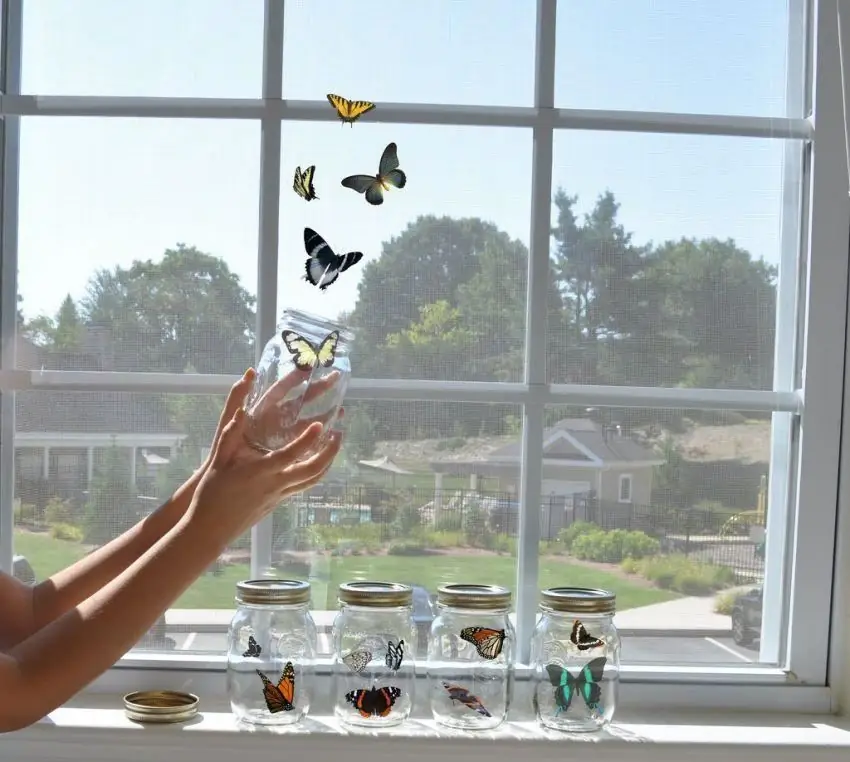2025 Author: Priscilla Miln | [email protected]. Last modified: 2025-01-22 17:55:18
Potholder is an indispensable thing in the kitchen. In addition to its direct purpose, it can be a bright element of decor. Making an accessory yourself is quite simple with the help of improvised means. The shape of the product can be either the usual square or unusual, original. In the article, we will consider how to make a Butterfly pot holder.
Helpful tips
Before you start sewing, it is recommended to pay attention to some tips:
- Since the potholder is supposed to protect hands from burns when touching hot objects, natural materials are used for its manufacture.
- For decorative elements it is also better to choose flame-resistant parts, synthetics and satin are inappropriate in this case.
- It is best to immediately make a full-size Butterfly potholder pattern.
- Between the top and bottom of the product must be a layer of synthetic winterizer or unnecessary flaps. Without it, the tack performs only a decorative function.
- Before sewing, new pieces of fabric must be washed andiron.
- It is desirable to check whether matter is shedding. To do this, the blanks are dipped in hot water. If it is dyed in any color, it is better not to use the fabric. After applying the finished product, it will need to be washed, as a result it will shed and lose its original attractive appearance.
Required materials, pattern
For self-made potholders "Butterfly" you will need:
- cotton fabric in several colors;
- synthetic winterizer;
- satin ribbon and bias trim;
- buttons and lace for decoration;
- cardboard for patterns;
- scissors, pencil, needle, thread;
- sewing machine.

If you can draw, you can draw the desired shape yourself. It is much easier to sew a Butterfly potholder according to a template pattern. In addition, if you like the product, it will allow you to make accessories of exactly the same shape in the future.
To begin with, a sketch is made on plain paper. The span of the upper wings is 26 cm, the lower wingspan is 21 cm, and the middle part and the height of the butterfly are 16 cm. When the contour is ready, they begin to draw individual details. The wings are 18 cm long, but they are made a little larger so that the fingers fit easily inside. The final version is transferred to cardboard and cut out.

You can decorate the pot holder to your taste or, as in this version, you will need a circle with a diameter of 6 cm and a petal of 10 cm in length.
Cut out elements
To make the Butterfly potholder beautiful, you need to choose patches that harmoniously combine with each other in color. Of course, in the absence of a variety of fabrics, the product can be sewn in one color, but ideally, these are six patches of different colors.

A full-size Butterfly potholder pattern is applied to the fabric, outlined with a simple pencil or pinned up with pins, and then cut out along the contour. The result should be:
- two solid butterflies in different colors;
- two wings of one and the other color;
- one-piece butterfly made of synthetic winterizer or other filler;
- two decorative elements each, in this case a petal and a circle.
Finish
As a decoration of the Butterfly pot holder with your own hands, various elements can be sewn to the product. For this, all kinds of materials are used: beads, ribbons, buttons, braid and other textile details. It all depends on the imagination and improvised means. In this case, it is a fabric in the form of a drop and a circle, lace and buttons. All parts must be attached symmetrically.
Each circle around the perimeter is stitched with a thread and pulled together. The petals are folded to the wrong side by 0.5 cm and basted. Then the parts are carefully ironed on both sides. From the inside, lace is sewn to the circles. At the end of the decoration, a button is attached to the center of each part on the front side. For a contrasting effect, it is recommended to use thick threads, for example, floss.
Sewpotholder
Before finishing the parts, they must be folded in the correct order. The sequence is as follows: inside out, a butterfly, then a layer of sealant (in this case, a synthetic winterizer) and again a butterfly, face up. Next, wings are applied to each side, folded in two parts, inside out to each other. So that the butterfly can be hung and for greater resemblance to a real moth, two strips (antennae) 20 cm long are cut out of the ribbon.

All parts are ironed in the order in which they will be sewn together. If a synthetic winterizer peeps out of the butterfly, it is carefully cut off with scissors. They begin to stitch the edges of the wings, leaving the inside not sewn, it will be further edged with tape.
The antennae are folded in half in the form of a loop and placed between butterflies, folded face to face, the ends should remain outside. Along the contour of the head, a line is made with small stitches. The product is turned out, the synthetic winterizer is laid, not losing the head. As a result, the object acquires volume and shape. The product is once again ironed and stitched around the perimeter, stepping back from the edge of 0.3-0.5 cm. So that even after washing the synthetic winterizer remains in place, does not crumple, and the tack does not lose its shape, it can be additionally quilted. To do this, measure and draw lines with a ruler at an angle of 45 ° to one side and the other, and then make lines along them.
Finishing
Now you can start decorating the wings. On the top of the part with invisible stitchescircle is sewn on. Do the same with the second element. Petals are sewn to the bottom of the wing by hand with large stitches or sewn on a typewriter. Then proceed to the processing of the unsewn edge. To do this, cut the tape of the desired length and, using a sewing machine, attach it along the rim of the decorated side of the wing. The second edge is folded down and sewn by hand with blind stitches.

The final stage is turning the Butterfly potholder with an oblique trim. Wings are pinned to the main product with pins or basted. A strip 4.5 cm thick is cut out diagonally from a piece of fabric. On each side, the edge is folded by 0.5 cm and ironed. On the perimeter of the potholders, they are attached on the front side, and on the reverse side they sew a slanting inlay manually with small stitches.
This is how you can quickly and easily decorate your kitchen with a bright accessory. In the same color range, you can make coasters and a teapot stand. And if the creative process is to your liking, why not sew potholders for family and friends?
Recommended:
Creative gift for a man: interesting ideas, DIY, photo

A creative gift for a man for any occasion must be unexpected. Since many representatives of the stronger sex want to receive something interesting and unusual as a present, one has to think about what can be presented to him as this. Fortunately, there is an answer, and you can find it in this article
DIY wedding glasses decor: ideas, master class

At a happy moment, when relatives and friends gather at the same table, they should see chic dishes, exquisite dishes and jewelry that would symbolize the newlyweds. In this article we will tell you how to make the decor of wedding glasses with your own hands, which in the future will remind you of a grand celebration
How to make DIY floating candles

Since ancient times, candles have been an element of celebration, with their help they decorated every family holiday. Candles are also considered a wonderful souvenir that you can give to loved ones on their holiday
Unusual DIY decorations for the New Year

This article has a lot of useful tips on how to make original decorations for the New Year. Enough to dream up, and you can get real masterpieces
How to care for a butterfly: features of keeping and feeding an unusual pet

There is nothing wrong or strange in bringing an insect from the street or sheltering an insect that has flown into the house and creating suitable conditions for its existence. We will look at how to care for butterflies of temperate latitudes, such as, for example, the extremely common urticaria, peacock eye, burdock, mourner or admiral

